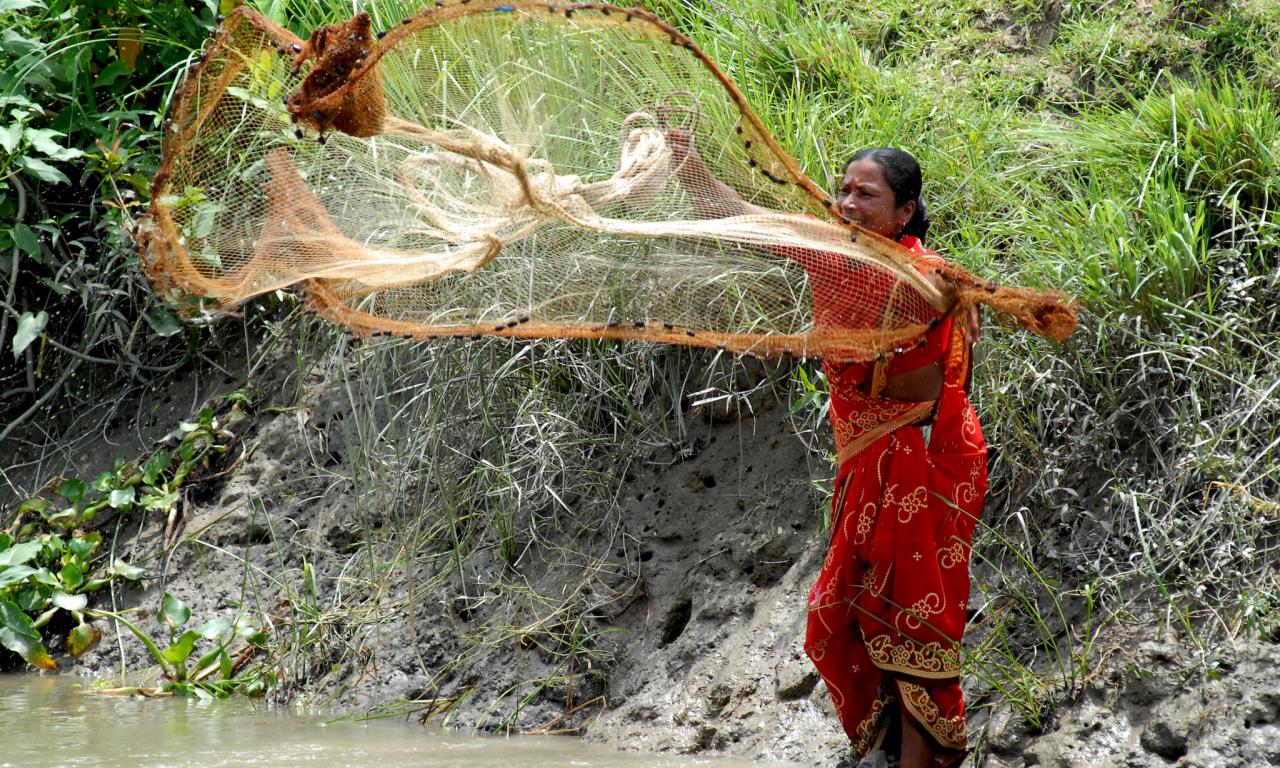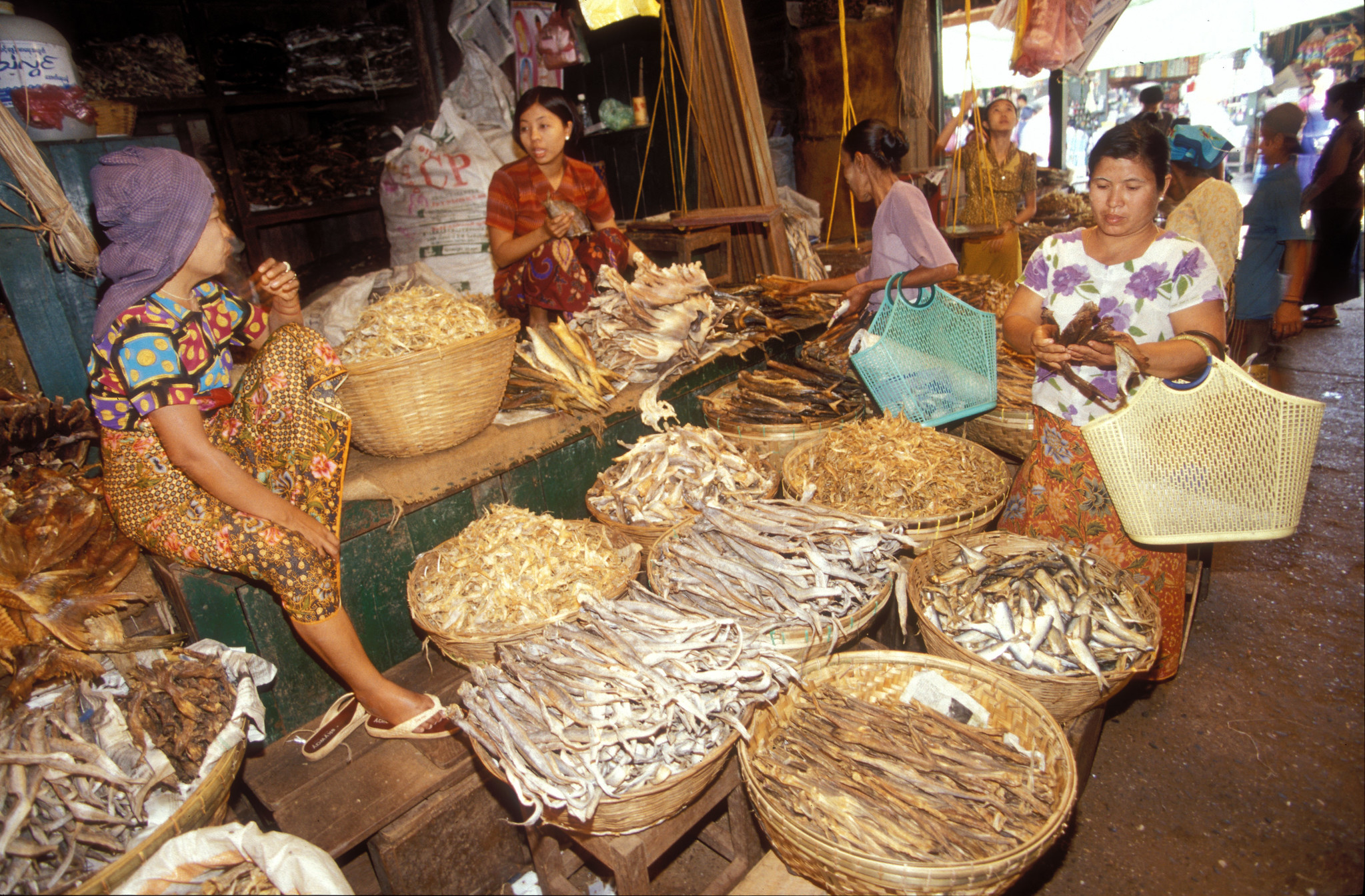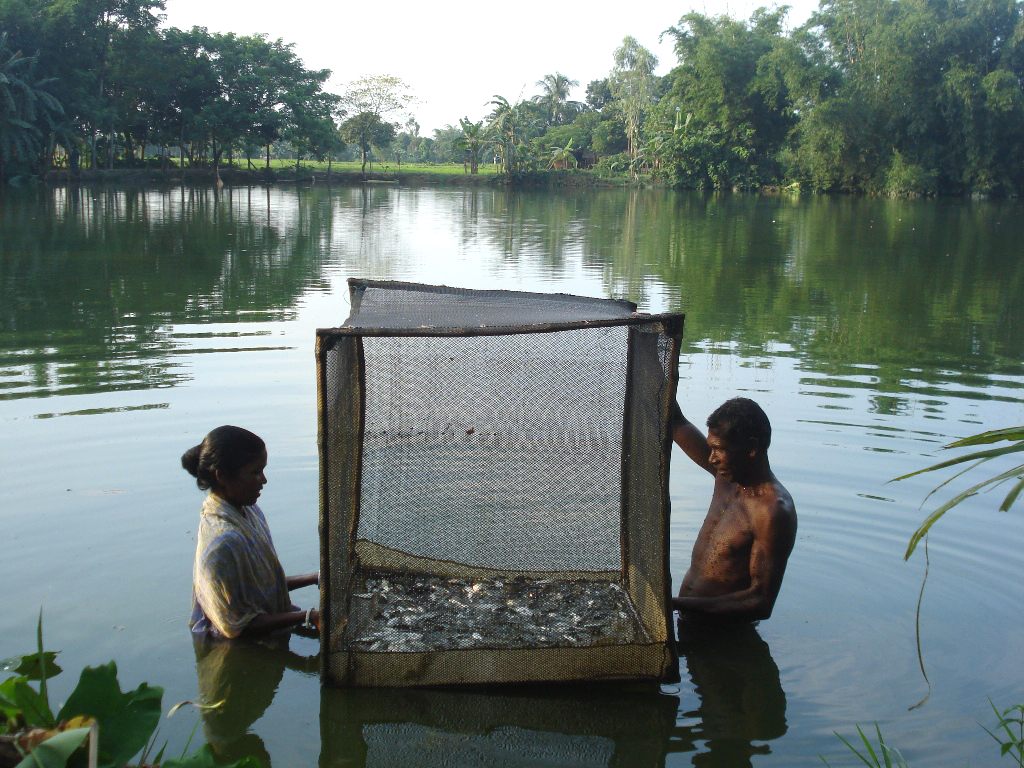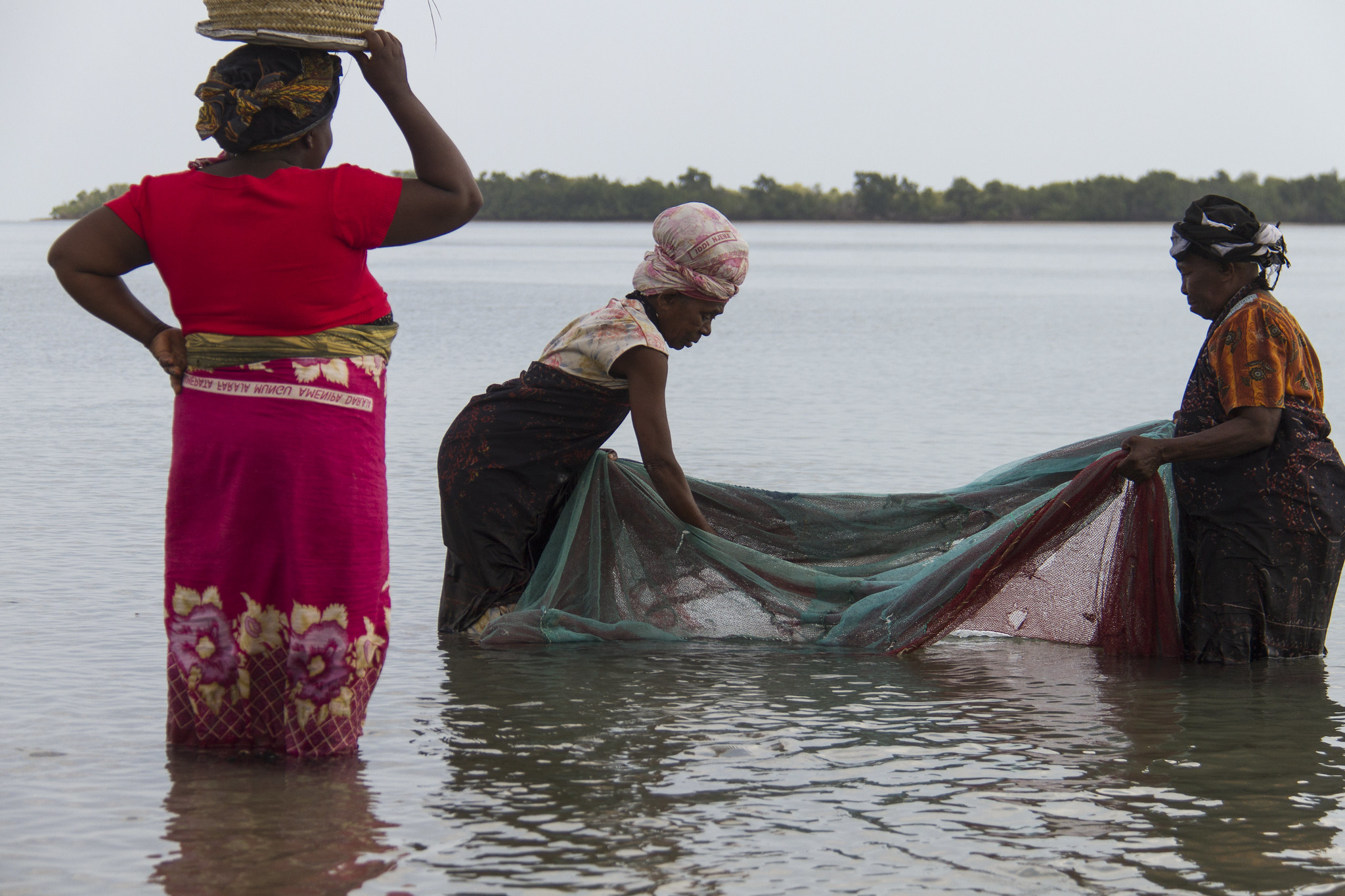
- Growing evidence points to gender equality playing a key role in aquatic food systems’ crucial contributions to achieving the 2030 Sustainable Development Goals
- Despite recent progress in advancing gender equality and women’s empowerment, inequity and barriers still remain in most parts of the world
- FISH gender scientists recommend four pathways to tackle gender barriers in aquatic food systems in a new strategic brief
Since 2014, women participation in aquatic food systems have reached about half of the workforce in the sector. However, their involvement is usually in less valuable supply chain nodes such as processing and trading.
In recent years, there has been some progress in advancing gender equality and women’s empowerment in parts of the world. Despite this laudable development, inequity and barriers still remain in most parts of the world that are heavily reliant on aquatic food systems for their food, nutrition and income security.
Barriers faced by women include limited access to and control over assets and resources, constraining gender norms, time and labor burdens of unpaid work, and barriers to sustaining entrepreneurship.
Women encountering such barriers and inequity have fewer opportunities and receive lower income compared to men. As a result, they are more likely to be entrapped in poverty and continue to be financially dependent on others.
Current initiatives insufficient and unsustainable

“The projects currently being implemented for aquaculture and small-scale fisheries in different countries are insufficient and unsustainable to address the inequities that exist in aquatic food system,” cautioned Rahma Adam, a social inclusion and market scientist at WorldFish.
She feels that there needs to be more commitment by people in higher governance levels to address the gender inequalities, which exist in most developing and middle-income countries. Such measures will lead to more equitable outcomes for both men and women who rely on aquatic food systems for a living.
In a recent strategic brief under the auspices of CGIAR Research Program on Fish Agri-Food Systems (FISH), WorldFish’s gender scientists proposed four pathways to achieve gender equality and increase women’s empowerment in aquatic food systems.
The brief outlines the current gender barriers in relation to each pathway in aquatic food systems and highlights FISH research and innovation that has responded to each. The brief also shares several supporting frameworks and methods packages developed in collaboration with partners and stakeholders to address these. These evidence-based recommendations can be utilized to address gender inequality.
Pathways illuminating the way forward

By integrating gender equity considerations in every stage of innovation, development, dissemination and uptake as espoused in Pathway 1, aquatic food systems can contribute more to food security and nutrition apart from just livelihoods and poverty reduction.
One aspect of this is enabling gender-responsive innovation through assessment of women’s and men’s preferences. In relation to improved rohu fish, for example, interdisciplinary research in India and Bangladesh, FISH teams found that while both genders seek improved growth rates, women also prioritized traits relating to flesh content, while men prioritized price.
Pathway 2 relates to inclusive livelihoods and wealth generation. Gender norms that restrict mobility and time use as well as increased labor burdens contribute to women receiving lower economic returns and disproportionately occupying informal and less-profitable roles in aquatic food supply chains.
In Egypt, for example, FISH research discovered that the value of fish sold by men retailers was almost double that of fish sold by women retailers. To promote inclusive livelihoods and wealth generation, Pathway 2 recommends structural and digital enablers to overcome such a situation.
Ownership of productive resources, spousal and family support, education as well as information communication technologies will allow women to work, train and receive payments from home, offering a way around gendered mobility constraints to economic empowerment.
Pathway 3 encourages inclusive governance as a strategy to achieve greater gender equality. The current predicament when it comes to inclusive governance of aquatic food systems is the overly focus on the individual, emphasizing improvement to women, instead of driving for societal responsibility and change.
Inclusive governance in aquatic food systems can be achieved through implementation of gender-responsive and rights-based policies, closing gender data gaps and amplifying women’s voice and leadership.
FISH has championed ocean governance to reflect the different voices and visions, especially local women and marginalized groups, protect human rights and equitably improve human well-being.
Pathway 4 promotes gender-transformative approaches to address underlying structural barriers. WorldFish pioneered the gender-transformative approach back in 2012 and have since collaborated with partners to conceptualize, test and scale these approaches in aquatic food systems.
Informal social rules around behaviors and roles perpetuate gender inequalities. In Myanmar, FISH unearthed traditional perceptions that only men are considered “real” fishers and breadwinners of the household. Such a situation leads to gender-imbalanced entitlements and control over household assets and livelihood decisions. As a consequence, opportunities for women to be engaged in aquatic food systems diminishes.
By incorporating gender-transformative approaches in Zambia, FISH achieved significant changes in gender attitudes and women’s empowerment resulting in women having a louder voice and were in more control over income.
Holistic measures needed, no quick fixes

The ongoing COVID-19 pandemic, which has particularly impacted low-income women, has brought to surface how underlying informal and formal structural barriers have a profound effect on the severity of which different people may suffer as a result of, adapt to and cope with measures to contain the spread of the virus.
“Part of the challenge is that the barriers are intertwined, overlapping and reinforcing — so we need to engage with and address a range of barriers at a range of scales at the same time,” highlighted FISH’s Gender Research Leader Cynthia McDougall.
She noted that the gender-transformative approaches embodied in Pathway 4 are an absolute priority at this moment in time especially with the ongoing global health crisis.
“Building forward better in a meaningful way – a just and effective way – will require addressing underlying constraining norms, gender-blind or biased systems, and outdated policy,” concluded McDougall.
Growing evidence points to gender equality playing a key role in aquatic food systems’ crucial contributions to achieving the 2030 Sustainable Development Goals (SDGs). Gender equality in aquatic food systems is an end in itself (SDG 5) and is needed for progress towards other urgent goals including climate resilience, poverty reduction, as well as food and nutrition security (SDGs 1, 2 and 13).
To this end, there is a need to boldly recognize and address underlying intersectional gender barriers then formulate gender-responsive, inclusive and transformative policies and programs. The evidence, guidance and resources in FISH’s four pathways to advance gender equality and women’s empowerment in aquatic food systems outlined in this strategic brief and its toolkit, as well as on the FISH gender webpage can help shine the path forward.
Director of FISH Michael Phillips applauded McDougall and her gender team and partners for a clear articulation of the pathways to advance gender equality and women’s empowerment.
“I hope this key brief from FISH provides a strong spark for the action needed – from local to global – to address one of the major challenges of our time,” added Phillips.
Acknowledgment
This work was undertaken as part of, and funded by, the CGIAR Research Program on Fish Agri-Food Systems (FISH) led by WorldFish. The program is supported by contributors to the CGIAR Trust Fund.
